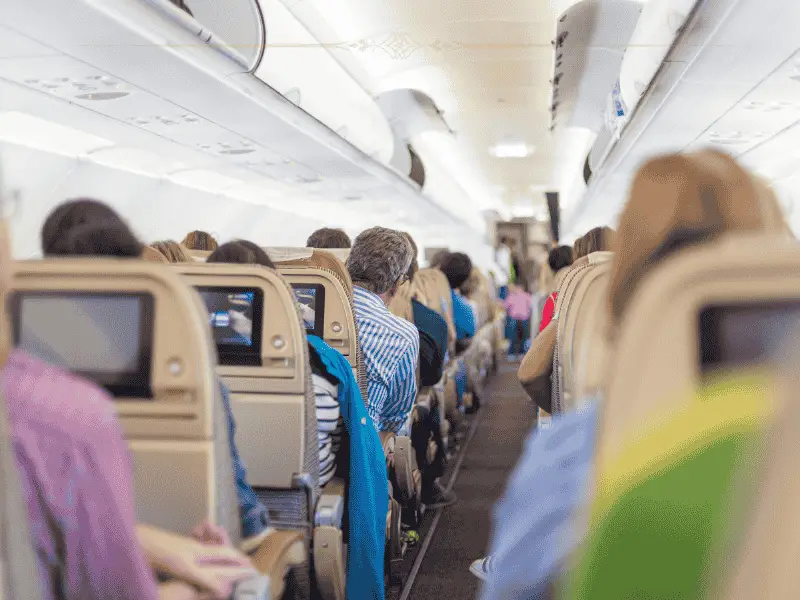Aviation industry experts have identified the most turbulent flight paths across the United States, with the route between Albuquerque and Denver claiming the top spot for unsettled air in 2024. The findings, released by turbulence forecasting platform Turbli, shed new light on which routes passengers might want to buckle up for.

Rocky Mountain Rough Rides Top the Charts
Data analysis of approximately 10,000 routes connecting 550 airports has revealed that the 350-mile stretch between Albuquerque International Sunport and Denver International Airport experiences the highest average turbulence levels in the country. The route recorded an Eddy Dissipation Rate (EDR) of 17.751, making it the nation’s shakiest air corridor.
Industry analysts note that while this figure falls within the “light” turbulence category, it consistently outranks all other domestic routes. The findings come from a comprehensive study utilizing data from both the National Oceanic and Atmospheric Administration (NOAA) and the UK Met Office.
Mountain Corridors Dominate Rankings
The research highlights a clear pattern: routes crossing the Rocky Mountains consistently rank among the most turbulent in the nation. Following the Albuquerque-Denver route, connections between Denver and Jackson Hole, Jackson Hole and Salt Lake City, and Denver to Salt Lake City round out the top rankings.
Aviation meteorologist Dr. Sarah Thompson explains, “Mountain ranges create significant atmospheric disturbances as air masses are forced upward. The Rocky Mountains, in particular, generate complex wind patterns that aircraft must navigate.”
Despite these findings, American travelers can take some comfort in knowing that none of the U.S. routes rank among the world’s most turbulent flights. The global title holder, the route between Mendoza, Argentina, and Santiago, Chile, crossing the Andes Mountains, records an average turbulence rate of 24.684 EDR – significantly higher than any U.S. route.
The Federal Aviation Administration (FAA) reports that turbulence remains the leading cause of injuries on commercial flights. Between 2008 and 2022, at least 152 serious injury incidents were attributed to turbulence because passengers were not wearing their seat belts.
The aviation industry measures turbulence using the Eddy Dissipation Rate, categorizing disturbances on a scale from 0 to 100. The classification system breaks down into five levels: light (0-20), moderate (20-40), strong (40-60), severe (60-80), and extreme (80-100).
Weather experts point to seasonal variations in turbulence patterns. Winter months typically see increased turbulence due to jet stream dynamics, while summer brings its own challenges with thunderstorms and varying wind conditions.
The industry is witnessing a revolution in turbulence prediction technology. Moving beyond traditional pilot reports, new systems provide real-time, objective measurements of atmospheric conditions. These advancements are helping airlines better predict and avoid rough air.
Aviation engineers emphasize that runway orientation significantly impacts landing conditions. While turbulence affects all flight directions equally, crosswinds during landing can create additional challenges depending on runway configuration.
Despite the attention-grabbing headlines about turbulent routes, aviation safety experts stress that modern aircraft are designed to handle significantly more turbulence than they typically encounter. Commercial airlines maintain strict safety protocols and sophisticated weather monitoring systems.
Aviation specialists suggest that while turbulence can’t be eliminated, understanding its patterns helps both airlines and passengers prepare for rougher flights. They recommend booking morning flights when possible, as turbulence tends to increase throughout the day as the sun heats the earth’s surface.
The findings come at a time when the aviation industry is investing heavily in turbulence detection and mitigation technologies. Airlines are increasingly equipping their aircraft with advanced weather radar systems and participating in turbulence reporting networks.
As passengers become more aware of these turbulent routes, industry experts emphasize that modern commercial aviation remains one of the safest forms of travel. The comprehensive mapping of turbulent routes represents another step forward in the industry’s ongoing efforts to enhance flight comfort and safety.
For travelers planning their next flight across the American West, these findings offer valuable insights into which routes might require keeping that seatbelt fastened. As the aviation industry continues to advance its understanding of atmospheric conditions, passengers can expect increasingly accurate predictions of when to prepare for a bumpy ride.




